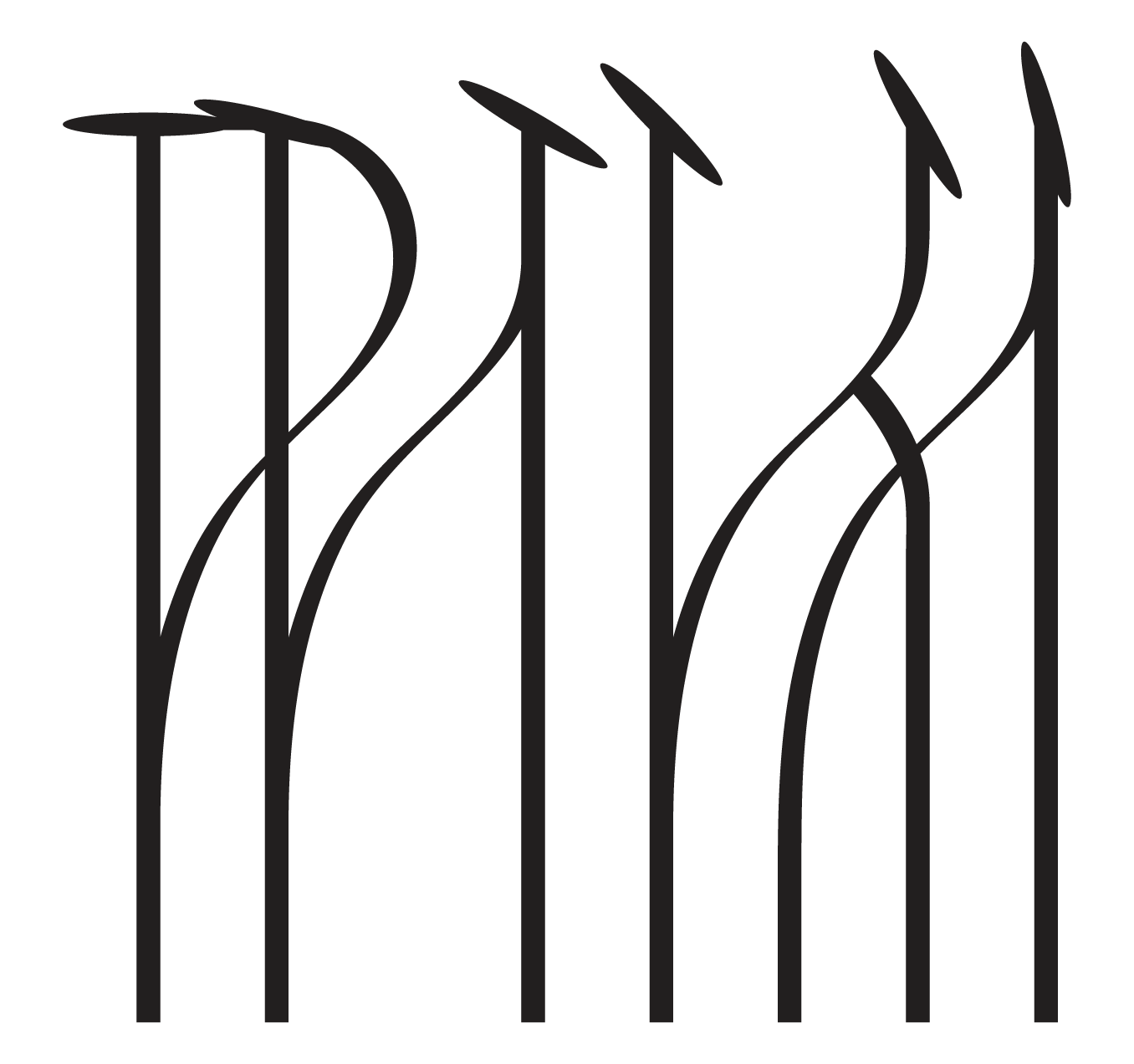Tango Trio
The Installation
The extension of Pak Klong Talat district, commonly known as Bangkok flower market, was explored by 3 scattered installations.
Tango Trio, a collaboration between PHKA and @humansofflowermarket by Arch SU, aims to create out-of-place pieces using local finds while playing with their contexts and passersby.
Tango Trio, a collaboration between PHKA and @humansofflowermarket by Arch SU, aims to create out-of-place pieces using local finds while playing with their contexts and passersby.
Tango #1
Location: Chakkraphet - Baan Mo intersection
Tango #2
Location: Yodpiman Market
Tango #3
Location: Under Phra Pokklao Bridge (next to First Post Office Monument)
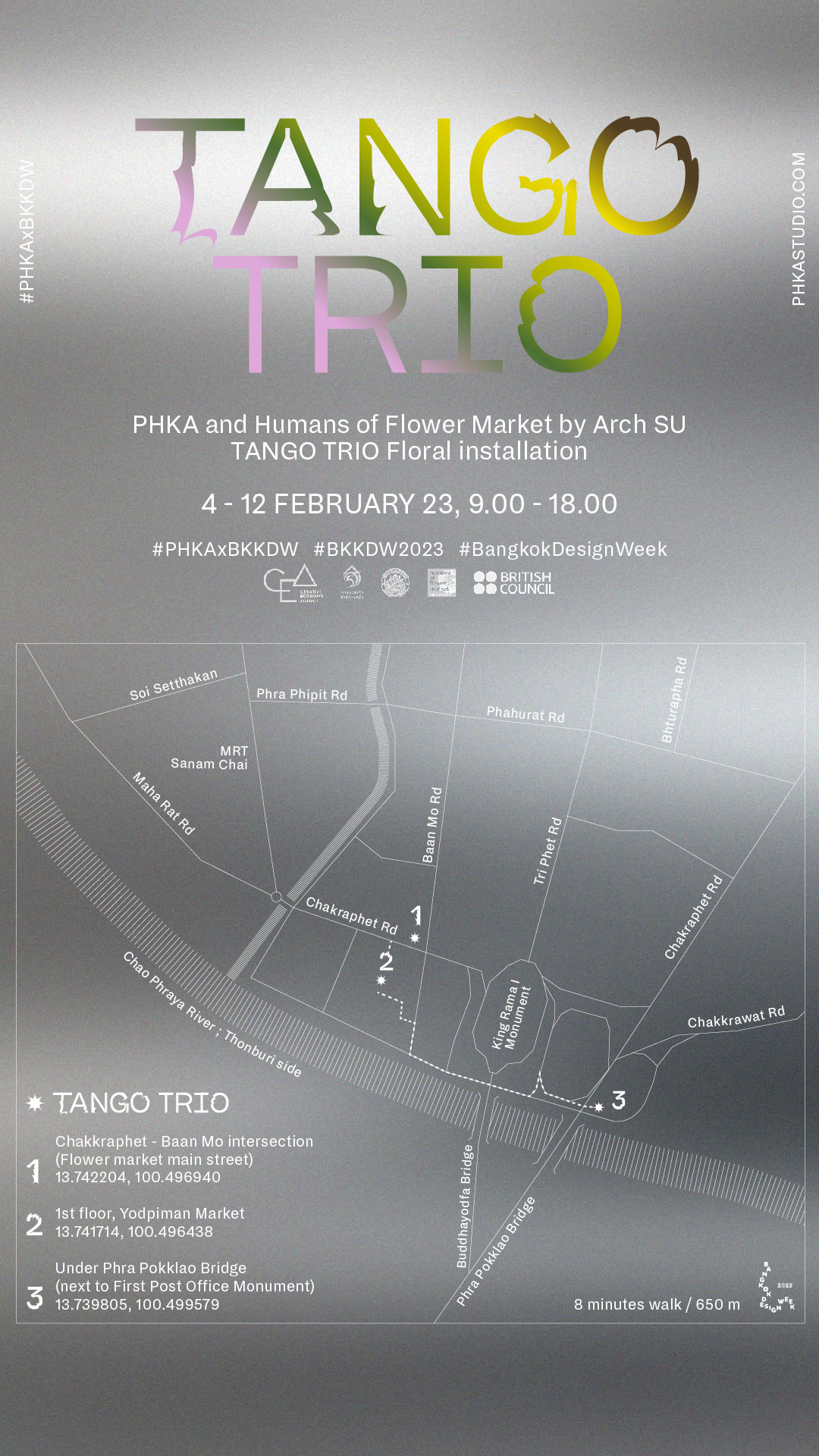

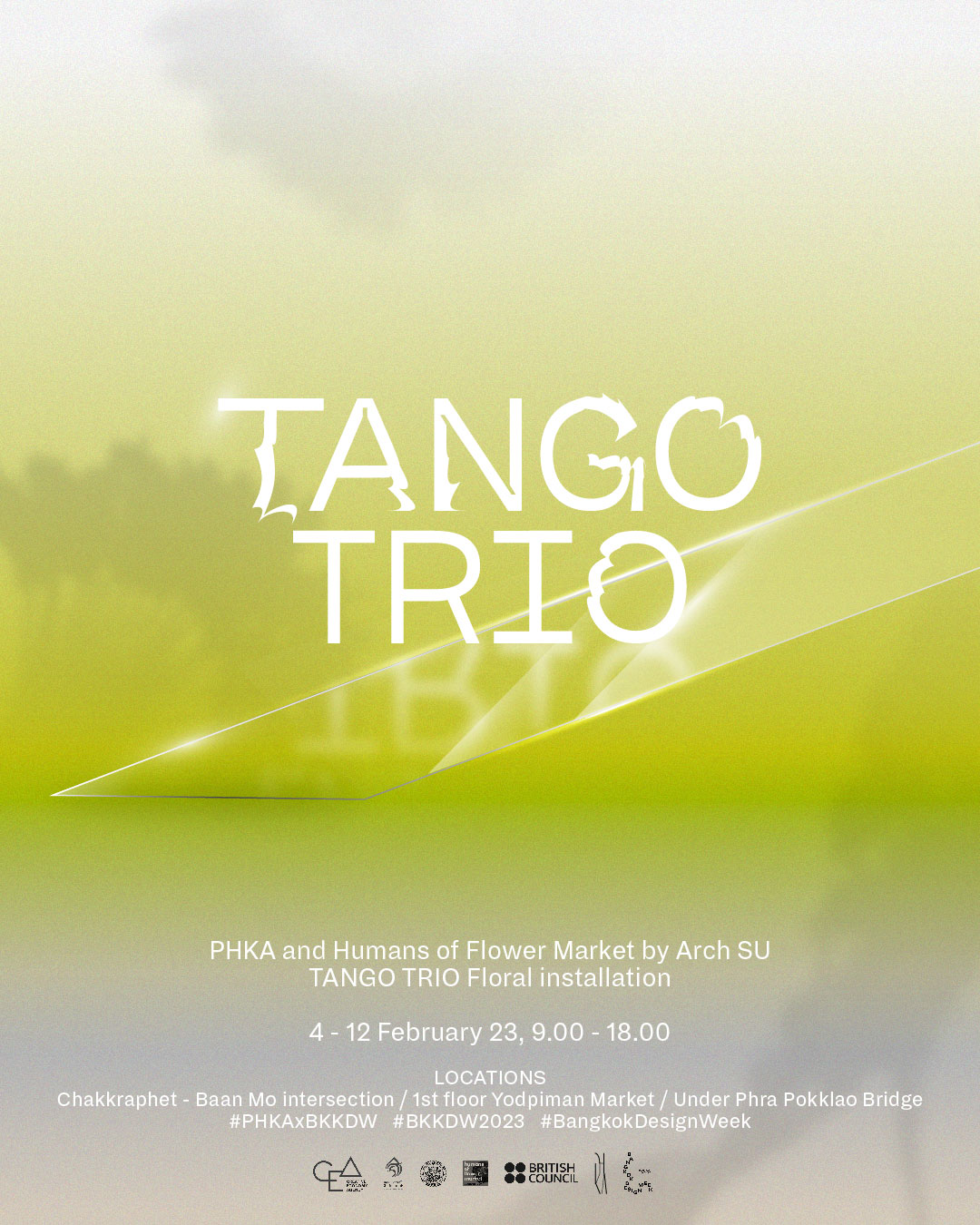

Designers / Florists
Tul Chompaisal
Vissata Duangwongsri
Thienchai Kraising
Nicharee Sammapan
Nattakarn Tanataweetum
Chutima Tangsinchai
Likhit Jiwvisesna
Prechaya Thananilkul
Communication Designers
Natthorn Tansurat
Photographer
Thanat Laoharawee
Photographer
Thanat Laoharawee
Spacetime
@boisbuchet
https://www.boisbuchet.org/workshops/2022-season-repair-recharge-reset/
https://www.boisbuchet.org/workshop/spacetime/
Domaine de Boisbuchet, France
https://www.boisbuchet.org/workshops/2022-season-repair-recharge-reset/
https://www.boisbuchet.org/workshop/spacetime/
Domaine de Boisbuchet, France

Boisbuchet Summer Workshop 2022 - Recharge, Repair, Reset
Excerpt from the program
What shall we do? The engine is overheated, poorly maintained and then there’s sand in the gearbox… Perhaps the forced deceleration we’re experiencing, with partial standstills, is just in time to take a closer look. We’ve known for a long time about the need for a circular economy, that CO2 emissions must be climate neutral, that power means responsibility and violence only increases the problem. We won’t reinvent the wheel, the house or the chair, but we can repair and improve a lot to make better use of our resources. Let’s use design to fix things and share the ride together.



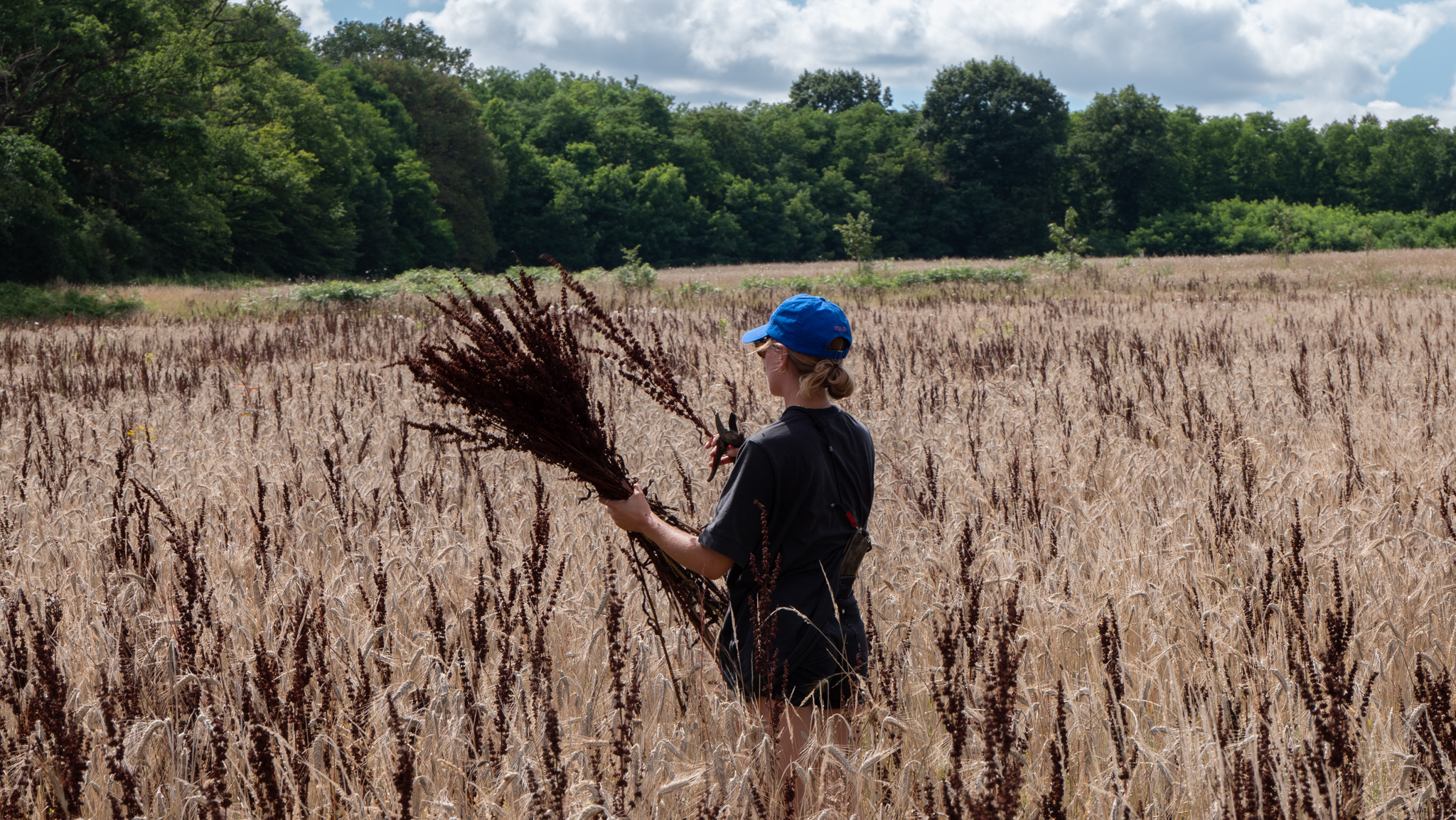
The Workshop
Excessive amount of waste created by our pace of daily life, spending seconds to made instant decisions on the most efficient way possible, will certainly return to affect us in the coming decades. Realising roots of problems and preventing them from happening is one thing but dealing with the waste that has been already produced is also necessary. By contrast, flowers and plants, with their temporal quality, are materials to work in slow speed – hours or even days. It will be a time-consuming and self-reflecting project to create a piece.
This workshop will be about slowing down our own passage of time by using locally-grown flowers and plants as mediums, together with upcycled waste. We would collectively create parts of ephemeral installation in a predefined space, contrastively question our utilisation of time and space.
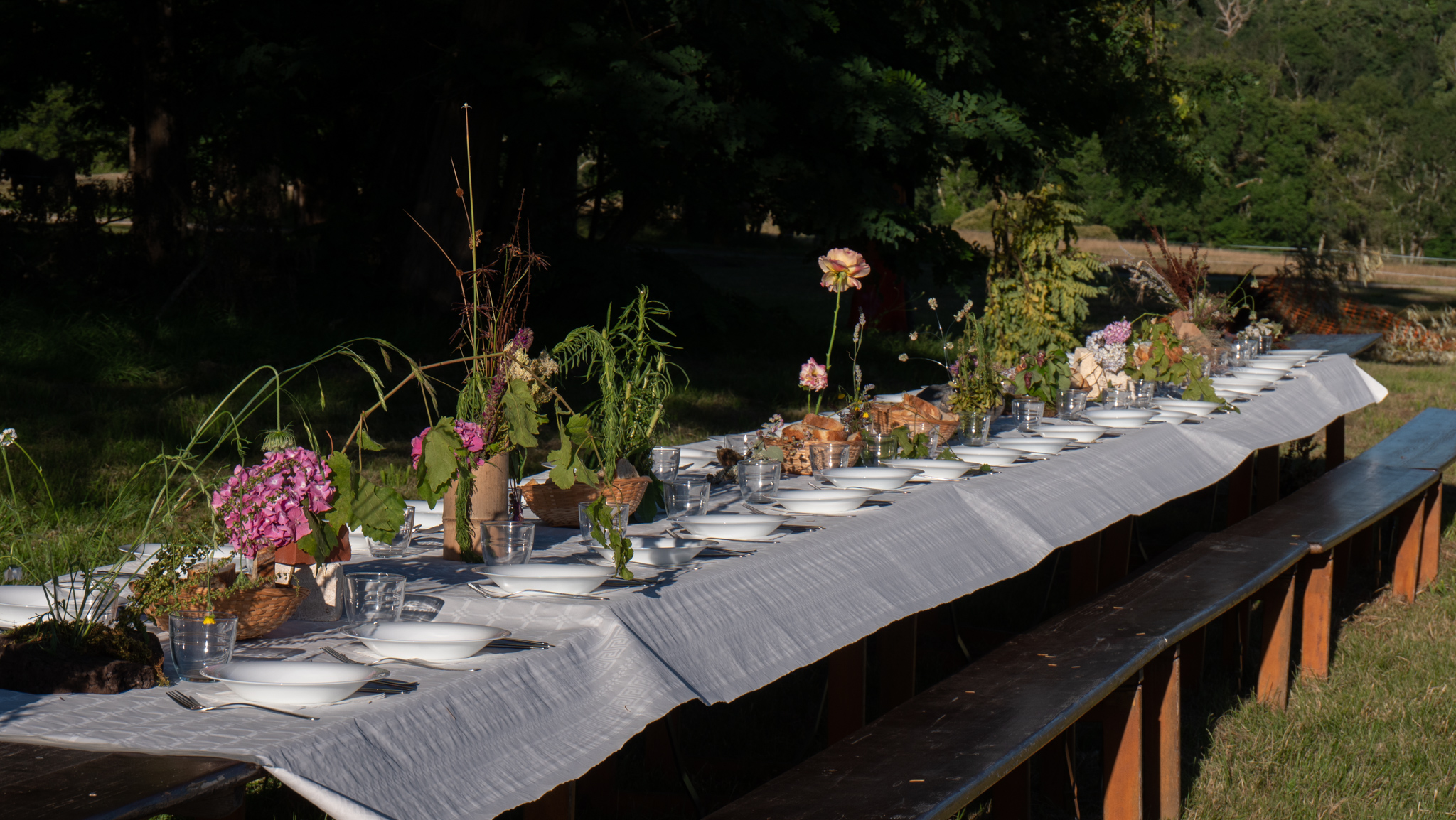


The installation
Safety fence found at nearby Maison du Jardin‘s construction site and extra clay pots left from Ahmed and Rashid bin Shabib’s Arab Pigeon Tower, together became a container for the floral installation. Filled with locally foraged and acquired vegetation including bamboo, sorrel and sunflower; the hectometer piece built a temporary topography in the summer lawn, reconnecting an axis between 19th century Dependance and Brückner & Brückner’s Log Cabin.


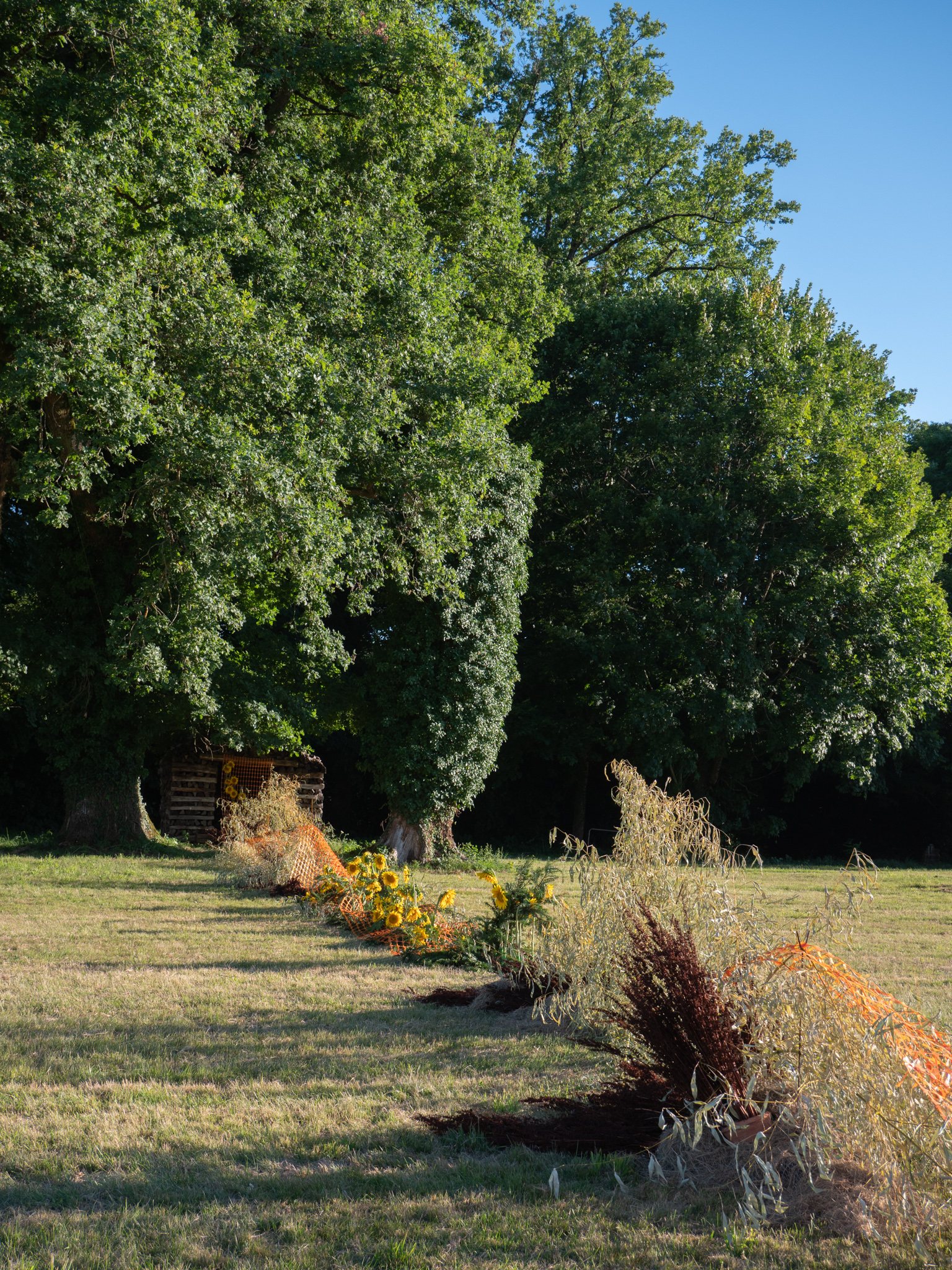

Tutor
Tul Chompaisal
Pradubwong Hongvisedchai
Chutima Tangsinchai
Participants
Benny Nemer
Lillian Wright
Clémentine Merle
Meaghan Lass
María Torres Traverso
Cassandra Lee
Petra Kooij
Agustina Arias
Stav Bozaglo
Boisbuchet Technical Team
Carlos Guisasola Suarez
Johannes Schellenberg
Photographer
Bensu Karamustafa
Samael Covarrubias
Photo courtesy of CIRECA / Domaine de Boisbuchet


Fragments of Time
#thailandbiennalekorat2021 #thailandbiennale
@thailand_biennale
www.thailandbiennale.org
Kurusammanakarn, Rajamangala University of Technology Isan
@thailand_biennale
www.thailandbiennale.org
Kurusammanakarn, Rajamangala University of Technology Isan
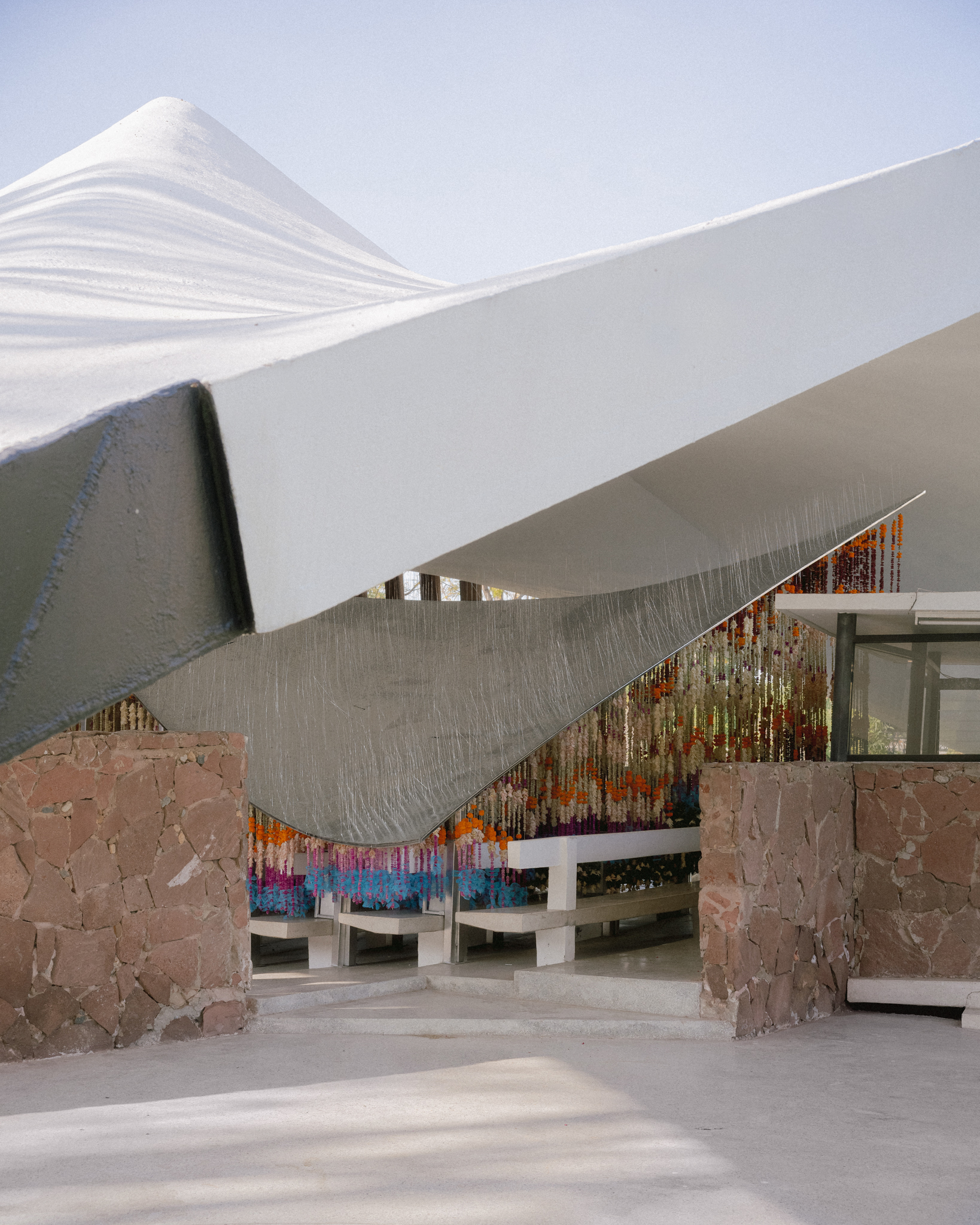
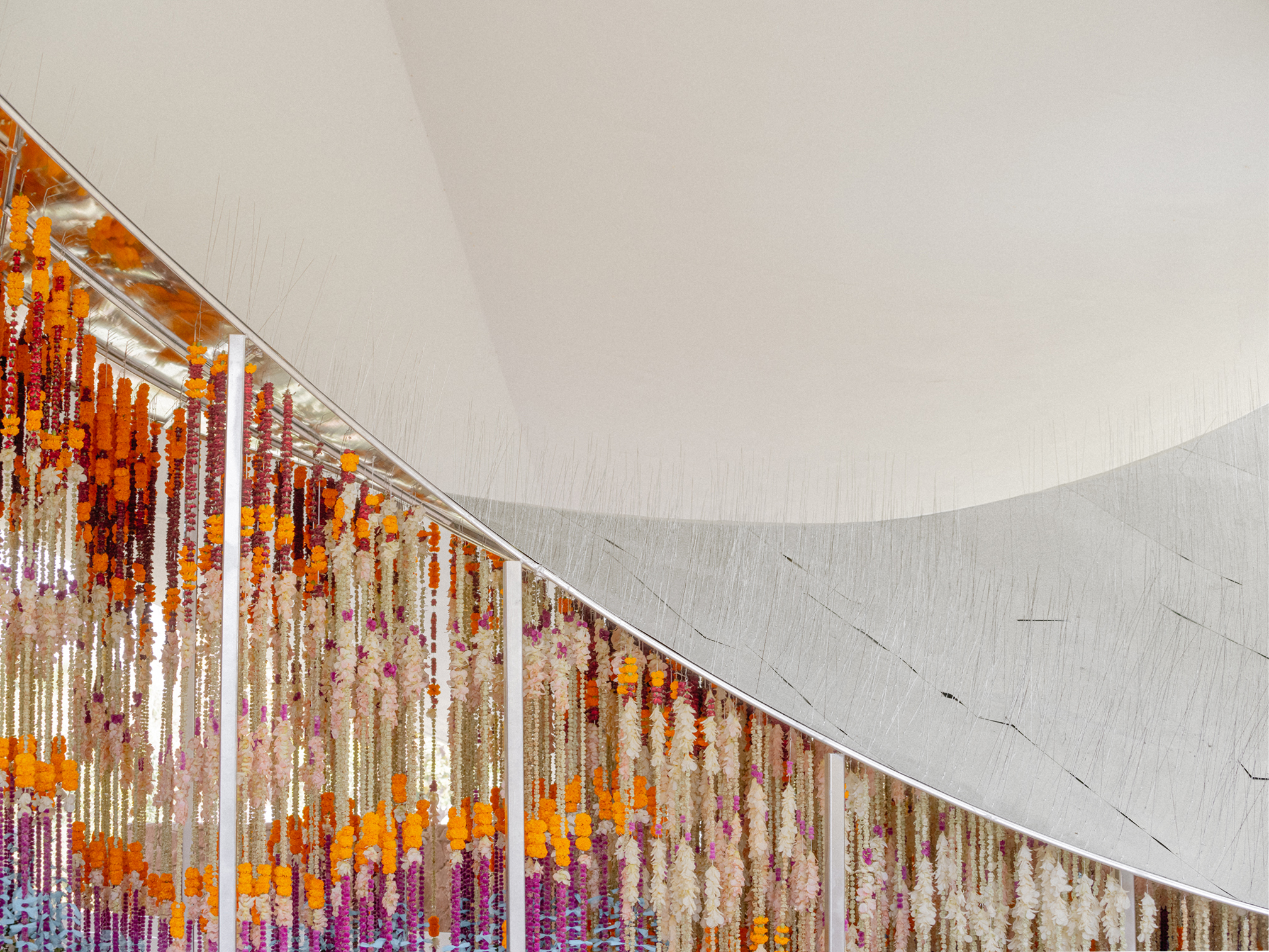
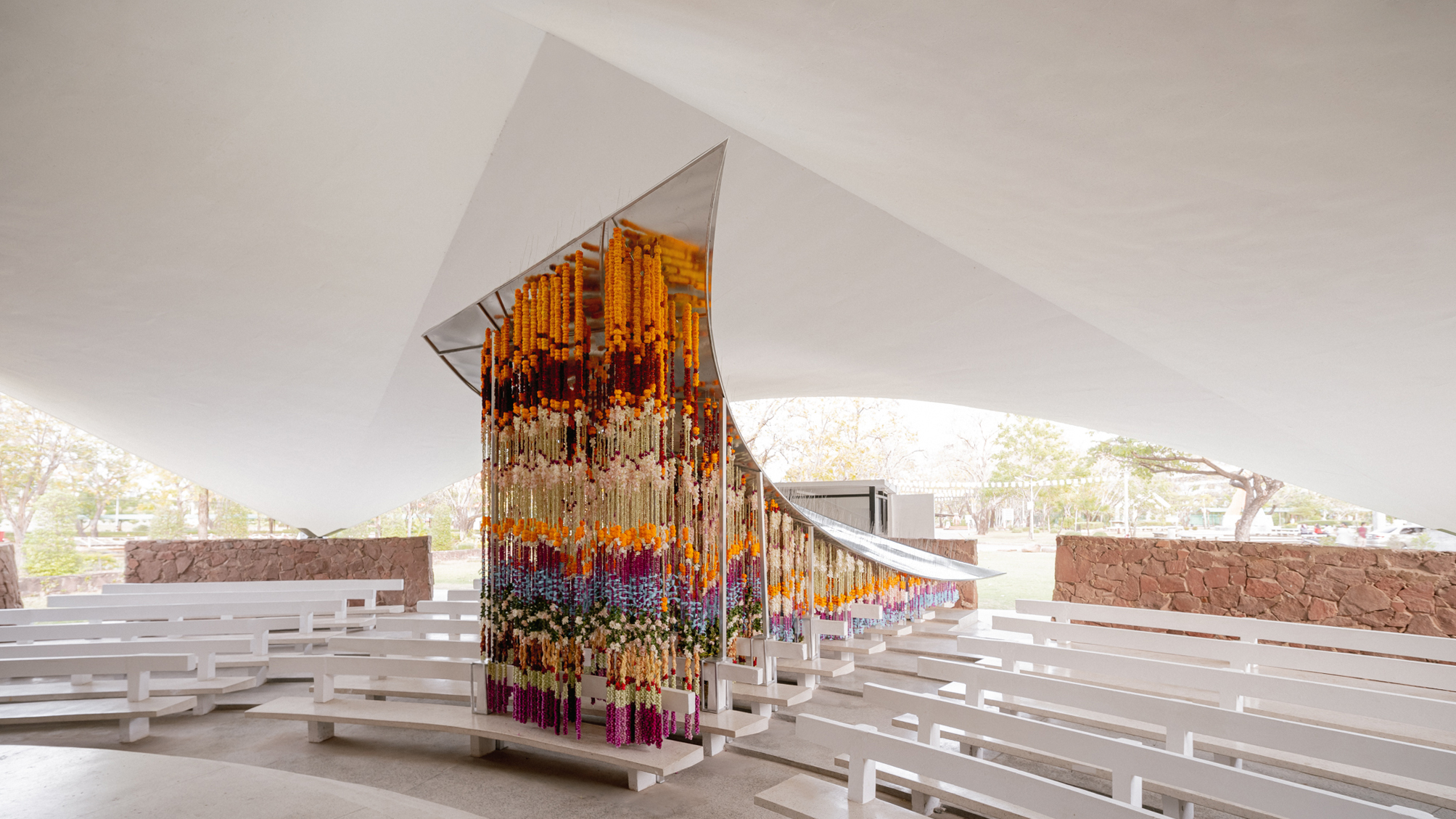
Abstract from Thailand Biennale curators
Fragments of Time is a floral site-specific installation by PHKA Studio, a floral designer based in Bangkok, Thailand. The studio is known for their public displays that use flowers and plants as a tool for storytelling. Their practice also involves an investigation of the site’s history. For Thailand Biennale, PHKA revisited the urban and industrial past of Korat city during the Cold War period, studying its rapid technological advancement during that time. They created a garland installation at Kurusammanakarn in Rajamangala University of Technology Isan. This outdoor seminar hall is one of the earliest pillarless buildings in the country that could be seen as a symbol of modernity in Korat. Using traditional garland designs and color schemes PHKA developed their modern garland design from local materials. The floral arrangement is based on a metal structure and includes a zinc plate onto which a map of the city is stenciled. The installation could be seen as a tribute to modern history and as a prayer to the future of the city. Looking into the sky, one could see Korat’s bright future.
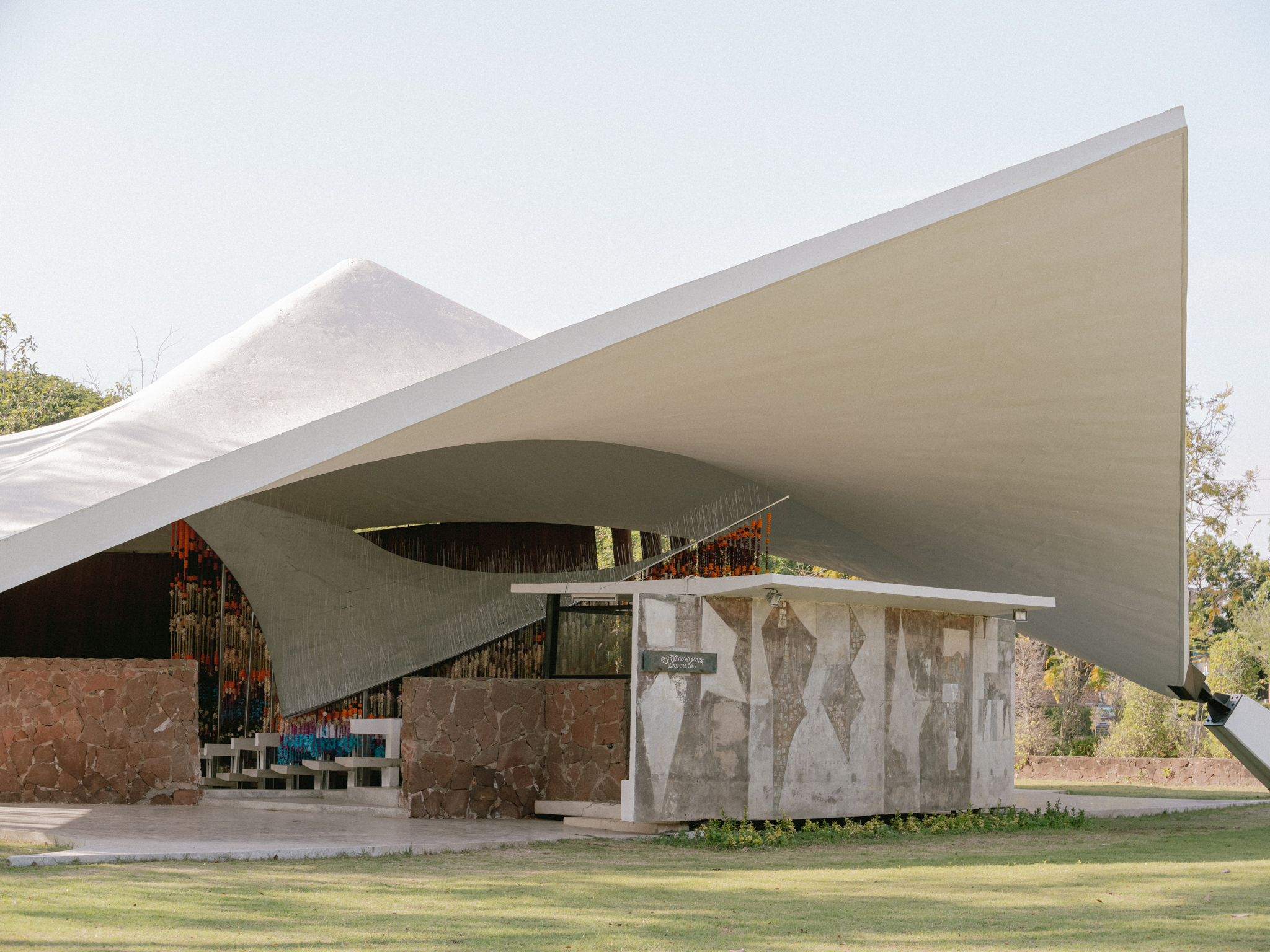

Background
Over a decade during Indochina War saw Korat occupied and heavily influenced by US, Korat, once an ancient stronghold, became a modern city after railroads connected with Bangkok and US bases settled. These totally altered what the preceding community.
Urbanised with new facilities and infrastructures, opportunities rose as business bloomed to support an influx of both foreign and domestic immigrants. However, without any long term strategic planning for Korat, the province itself was more like a property leased out or became a de facto colonised area of Thailand. Natural features and resources were utilised in the wake of increased population. Not long after US troops left, we saw Korat in an almost freezing state since. The excitement was over. Architectural remnants remains across the cityscape with unregulated development were implemented in later years. This stronghold is kind of spiritlessly empty.
Fragility of city and shifts
Drought, climate change, disaster, poverty, and mass killing are only a few among countless problems various cities facing nowadays; while a world-changing pandemic obviously illustrates how fragile these cities are. Their people could not cope with such threats with any kind of established urban infrastructures. Our fabricated spaces are nothing but cells and blocks we confined in. Smaller towns, however, possibly have more sustainability and resilience to deal with those menaces. Reduction of urbanisation on megacities come a lower cost, higher individual dependence, and also promote greater community that lost in larger cities. A reconnection between human-human and human-nature could be strengthened.
In an unprecedented future that lies ahead of Korat, megaprojects have been planned to introduce a new reality in the next decade. These hierarchical and seems-to-be long-lasting development may once again neglect the relationship between tiny individuals, but changes made from down below actually shall not be ignored. Permanent or temporal, big or small, we are to immerse ourselves in these shifts.
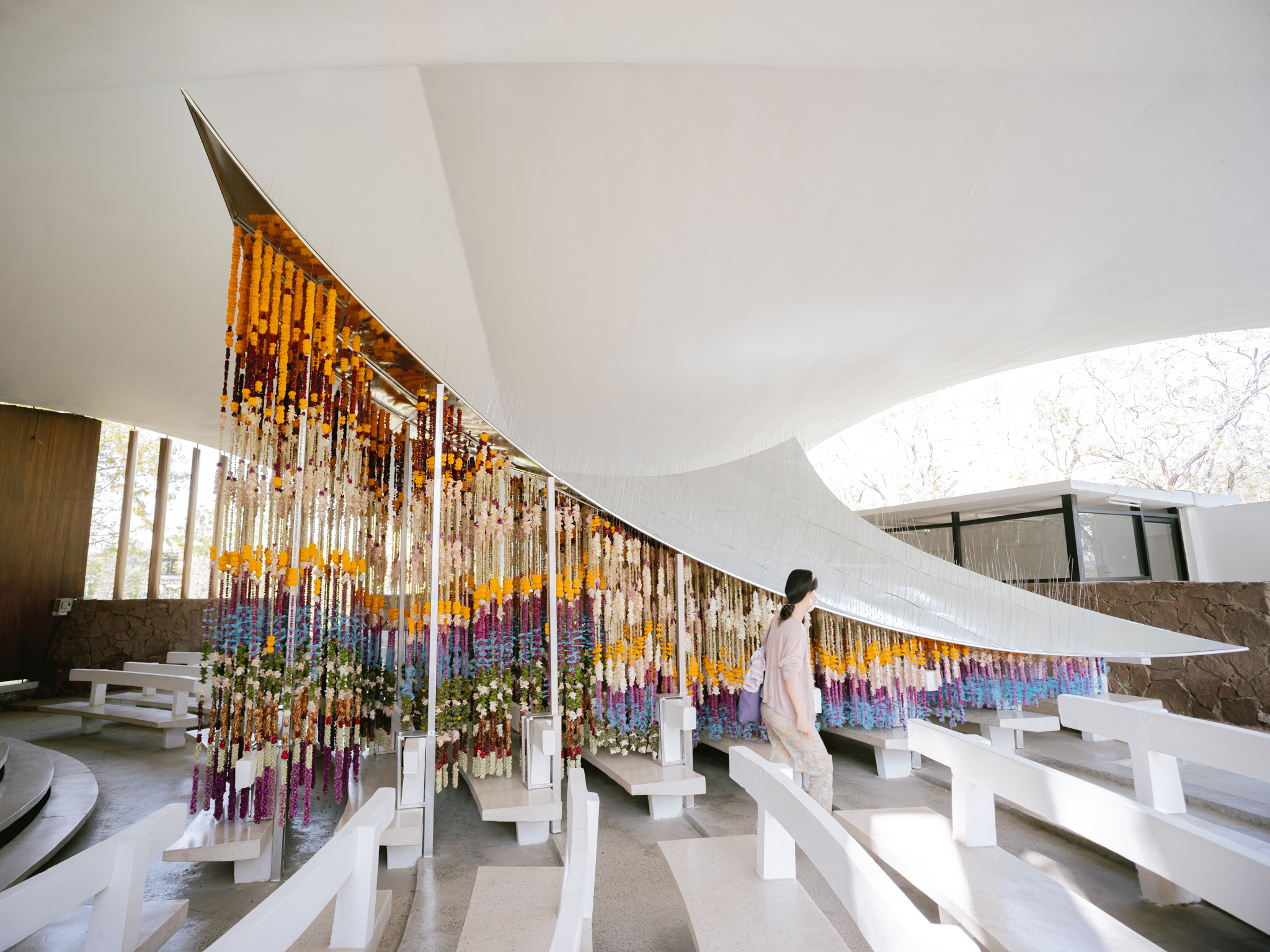
The installation
The swaying silver sheet, metaphorizing Korat cityscape (ii), was digitally punched by pattern of city’s figure and ground (i). Made of zinc, one of the very common material seen in temporary shelter for construction workers, it also depicts the ambiguity of temporary and permanence. And through the punched holes, malai (garland) needles penetrated in upward direction, as if they are ephemeral shifts people made to the city.

All the components in malai string, comprising of local flowers found in the Korat market, have been selected with different deterioration rates, from the weak champaka to the longlasting globe amaranth. Changes to the condition can be expected during the 3 months exhibition period. Added to the floral selection are two gimmicks, folded banana leaf and light blue sheer fabric. The first is a resting element used in malai threading while the latter represents PVC tube, another common materials seen in Thai flower market.
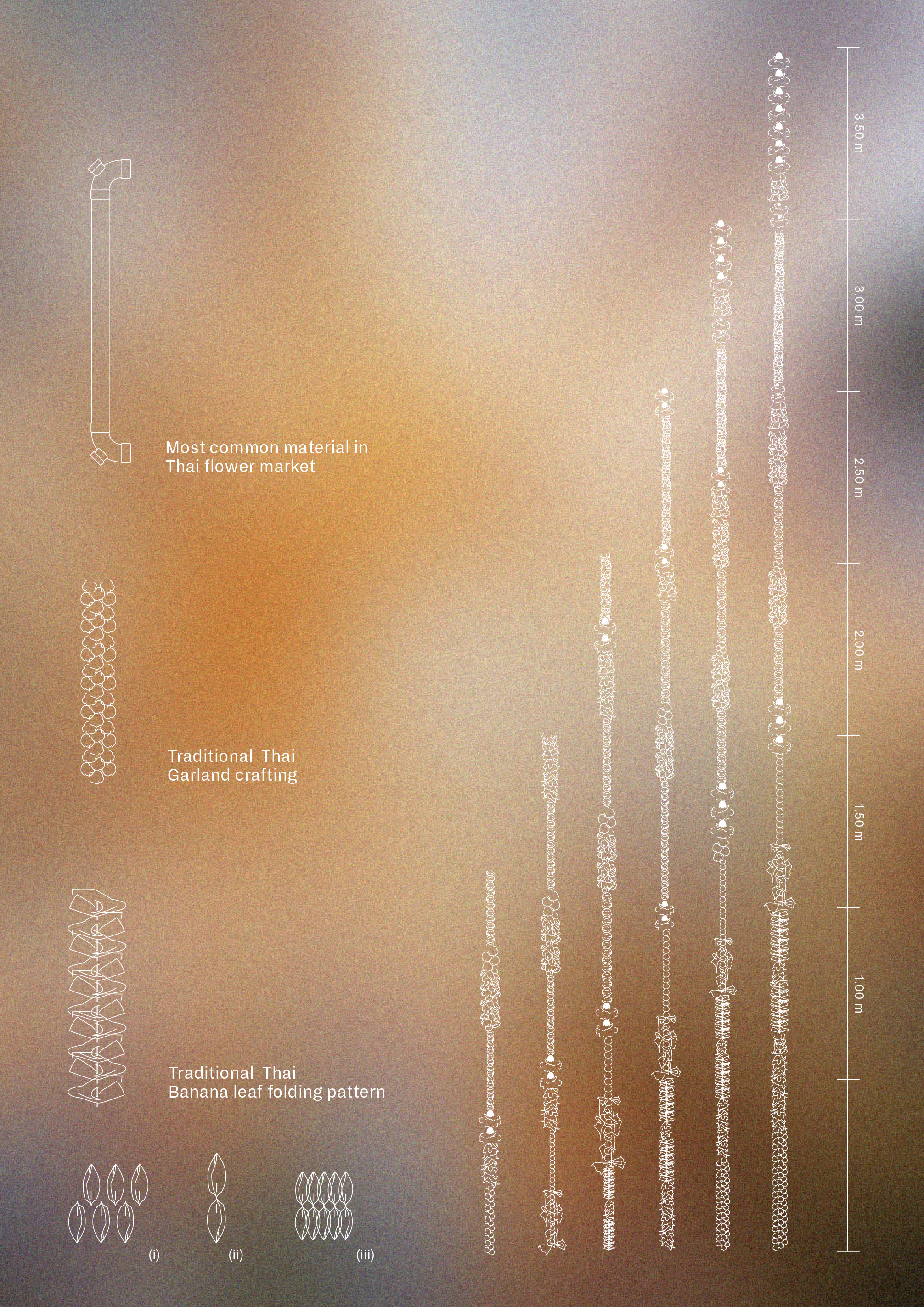


Thailand Biennale
Yuko Hasegawa - Curator
Vipash Purichanont - Co-curator
Seiha Kurosawa - Co-curator
Tawatchai Somkong - Co-curator
Designers / Florists
Tul Chompaisal
Vissata Duangwongsri
Siraphatsorn Chumnongwongse
Nattakarn Tanataweetum
Thienchai Kraising
Nattamon Tepwatcharakarun
Natthorn Tansurat
Ploynapas Rojrujaporn
Likhit Jiwvisesna
Structure Engineers
Watcharis Chavalitkul
Korakot Loudsirimongkol
Photographer
Napat Pattrayanond
Watcharis Chavalitkul
Korakot Loudsirimongkol
Photographer
Napat Pattrayanond
PHKAxNoeKuremoto collaboration
Kodama


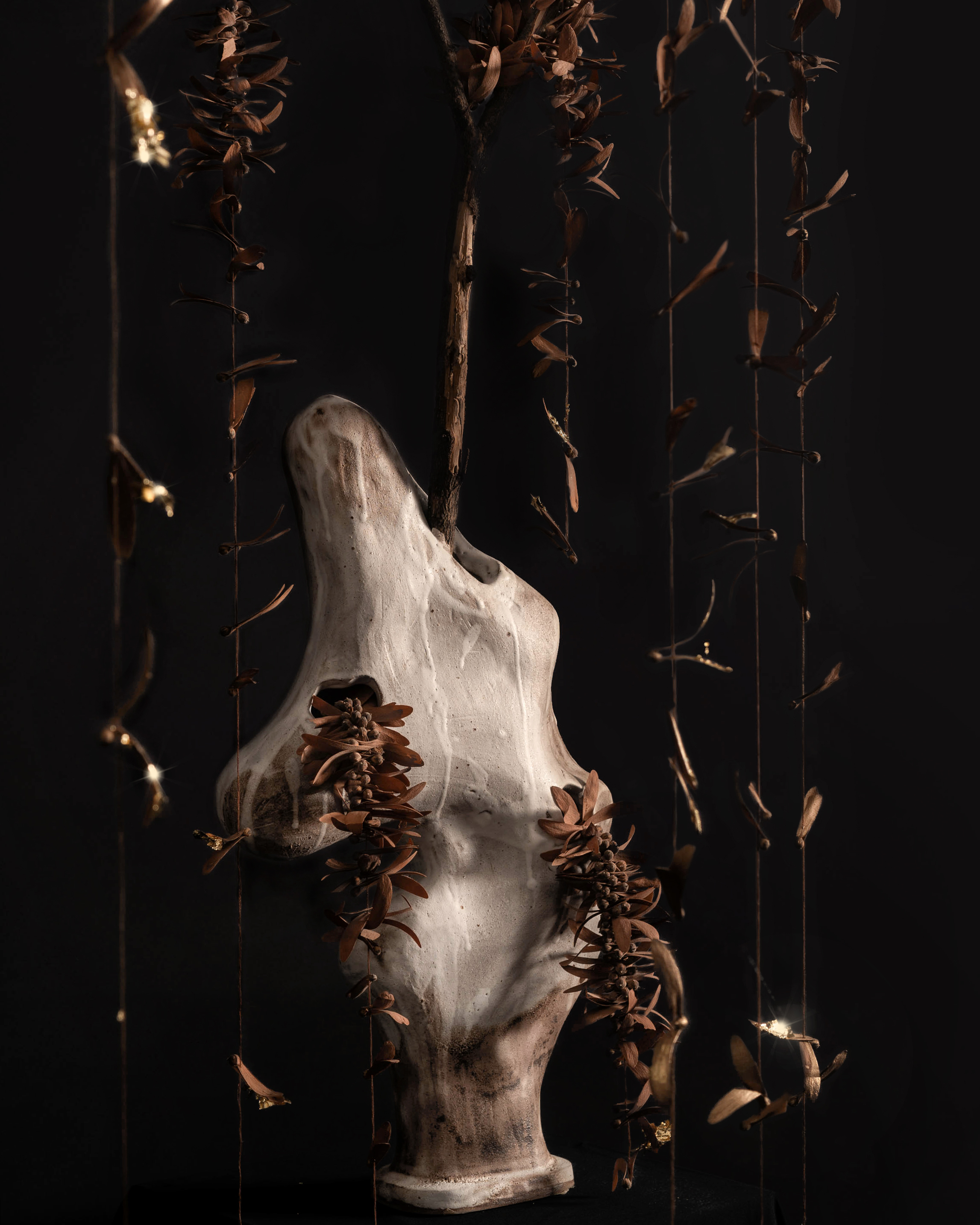
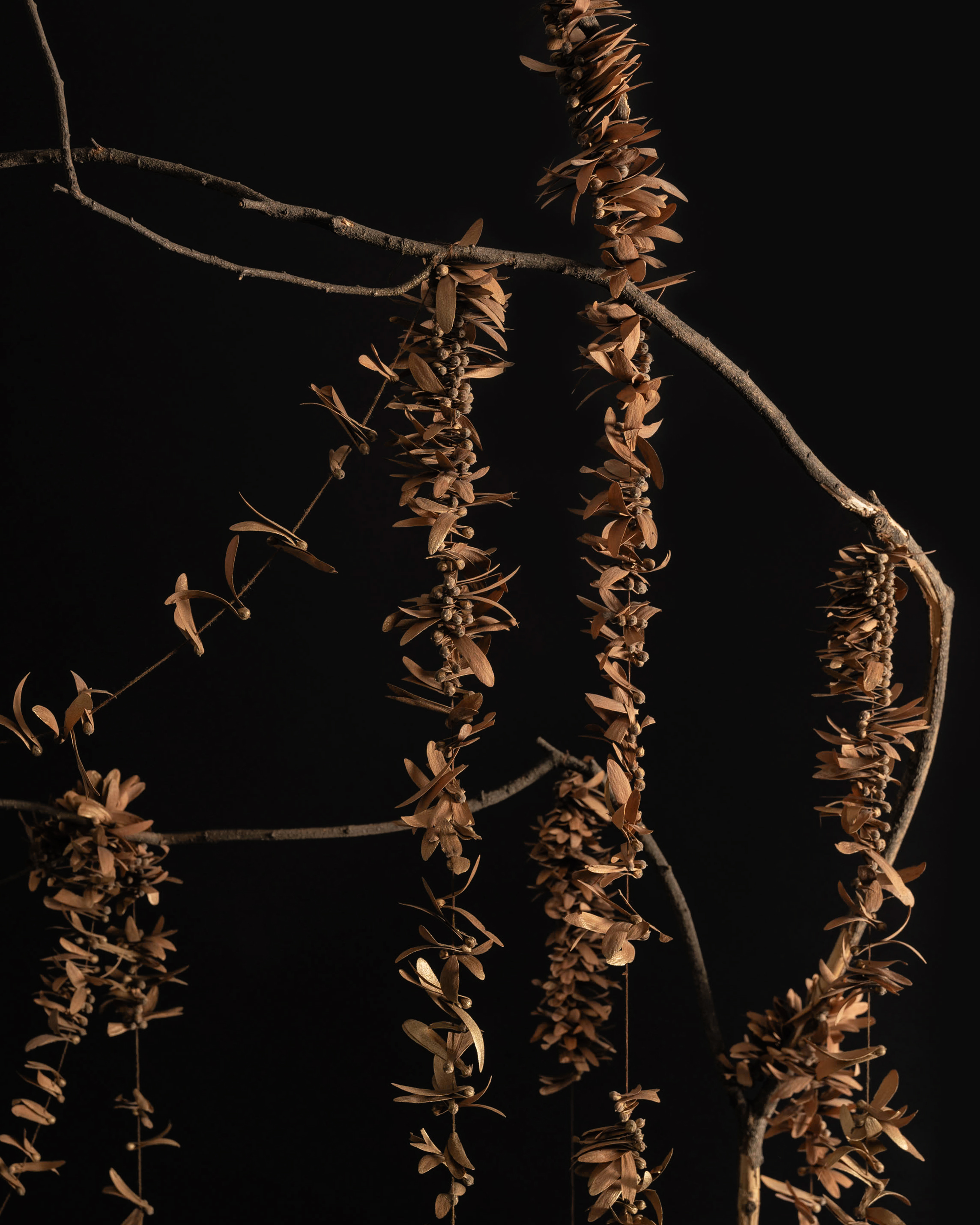

Girl in Brown (Kodama 5)
One of two famous Thai nymphs, Nang Takian – The Ironwood Girl belongs to particular such tree. Since its timber is perfect local material to construct traditional wooden house and ship back in old times; before cutting down into log, a ceremony with offerings will be required. The sylvan spirit will be then invited to live on into the habitat and thus protecting people inside, to live peacefully or to safely reach the destination through storms. Ironwood’s seeds were threaded together in garlands and festooned on the twig, in and out of Kodama. Hand-gilding with gold leaf was done as a finishing as it was done on sacred objects.
Photographer
Chayaluck Peechapat
One of two famous Thai nymphs, Nang Takian – The Ironwood Girl belongs to particular such tree. Since its timber is perfect local material to construct traditional wooden house and ship back in old times; before cutting down into log, a ceremony with offerings will be required. The sylvan spirit will be then invited to live on into the habitat and thus protecting people inside, to live peacefully or to safely reach the destination through storms. Ironwood’s seeds were threaded together in garlands and festooned on the twig, in and out of Kodama. Hand-gilding with gold leaf was done as a finishing as it was done on sacred objects.
Photographer
Chayaluck Peechapat
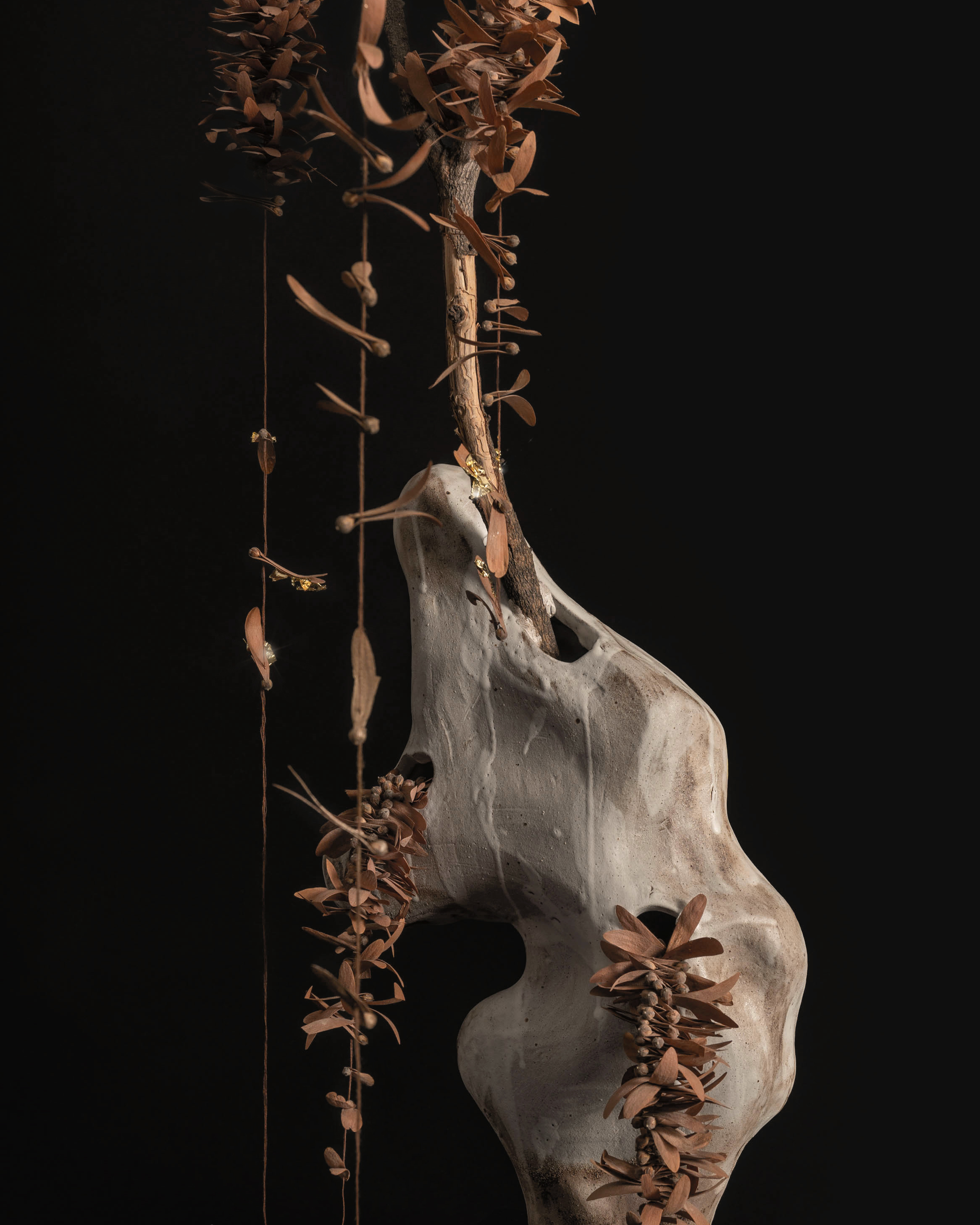



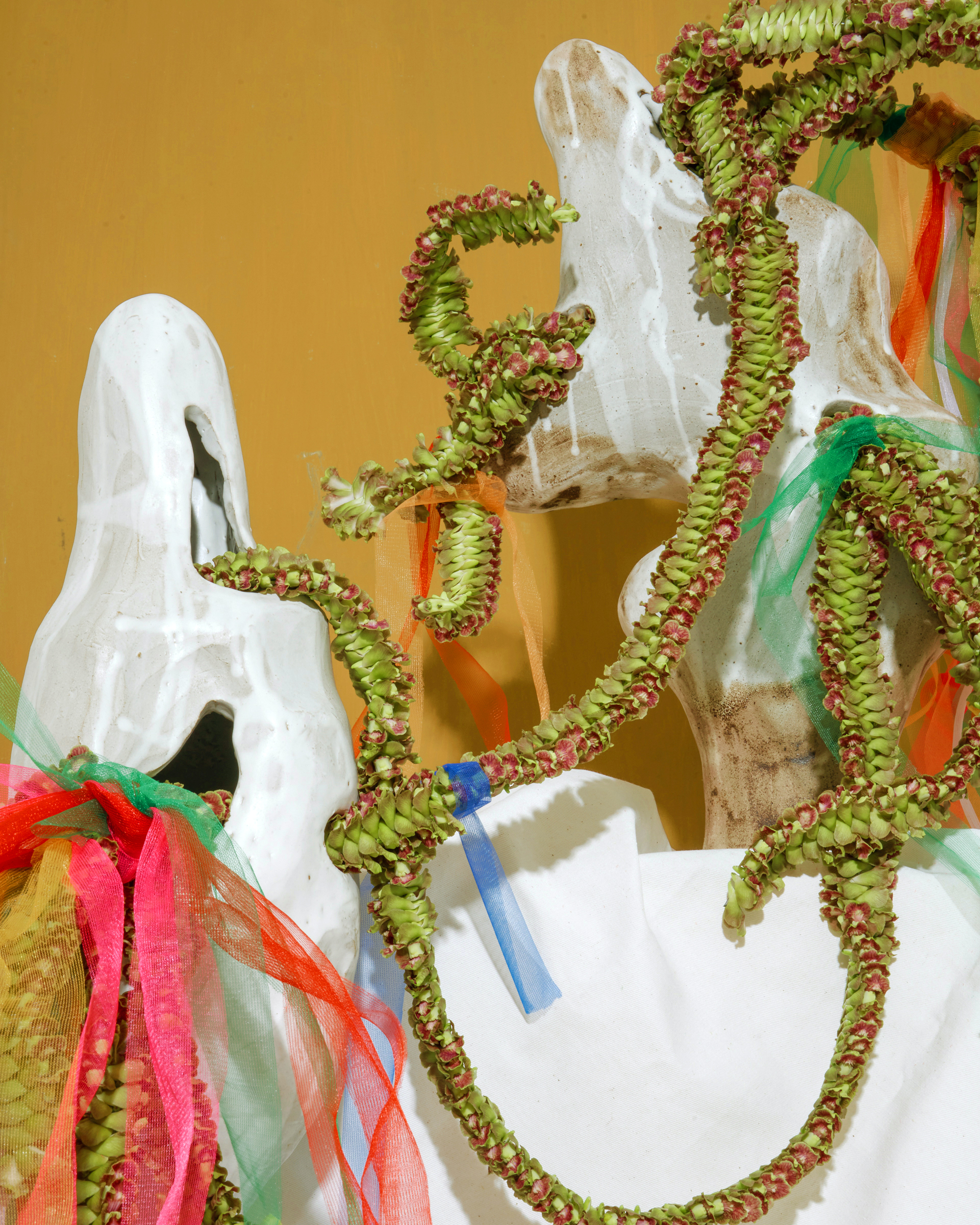

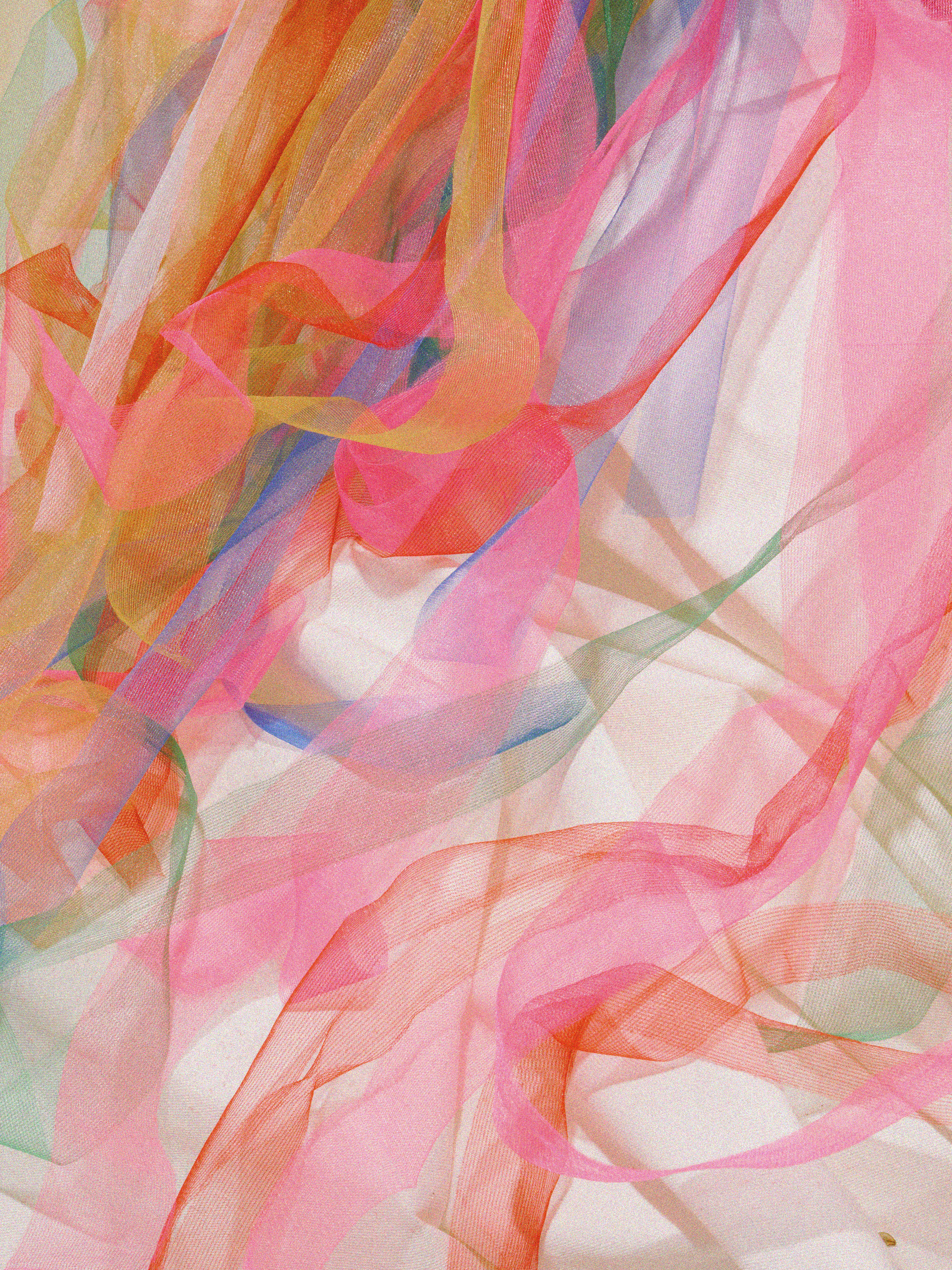
Sedimentation (Kodama 1 and Kodama 5)
Removing bad luck, winning a lotto, recovering from illness or fulfilling wishes; we pray to supreme beings since ancient times.
Regionally and religiously different, worship to deities come in various approach. The common one in Thailand is dressing up the tree with 7-coloured-clothes and garlands; which
you may found them on shrine, tree, or statues; even in the city center of Bangkok.
In this modern day with Atheism becoming more popular; it might sound superstitious but many Thais have faith in these dogmas, with no certain history on origin or how
it roots deeply. Just more clothes and garlands worn on, more holy the spirit will be, more people will come, and the believe live on.
Photographer
Teerachai Sanjaisri
Removing bad luck, winning a lotto, recovering from illness or fulfilling wishes; we pray to supreme beings since ancient times.
Regionally and religiously different, worship to deities come in various approach. The common one in Thailand is dressing up the tree with 7-coloured-clothes and garlands; which
you may found them on shrine, tree, or statues; even in the city center of Bangkok.
In this modern day with Atheism becoming more popular; it might sound superstitious but many Thais have faith in these dogmas, with no certain history on origin or how
it roots deeply. Just more clothes and garlands worn on, more holy the spirit will be, more people will come, and the believe live on.
Photographer
Teerachai Sanjaisri

Shadow Entities (Kodama 1)
Once in several years, a solar eclipse will be occurred – mythically believed that the sun was eaten by Rāhu, a dark demon which bring chaos and disaster. To prevent ourselves from ill-fated events, spiritually and physically maybe, exactly 8 types of any available offering and the spell are necessary. In this piece of arrangement; grass jelly, eggplant, sweet potato, grape, cabbage, allium, carnation, and Crocosmia were selected as dark ingredients. Can you spot them all?
Once in several years, a solar eclipse will be occurred – mythically believed that the sun was eaten by Rāhu, a dark demon which bring chaos and disaster. To prevent ourselves from ill-fated events, spiritually and physically maybe, exactly 8 types of any available offering and the spell are necessary. In this piece of arrangement; grass jelly, eggplant, sweet potato, grape, cabbage, allium, carnation, and Crocosmia were selected as dark ingredients. Can you spot them all?
Photographer
Pattaradhorn Rujeraprapa
Pattaradhorn Rujeraprapa



G&S - wedding ceremomy














